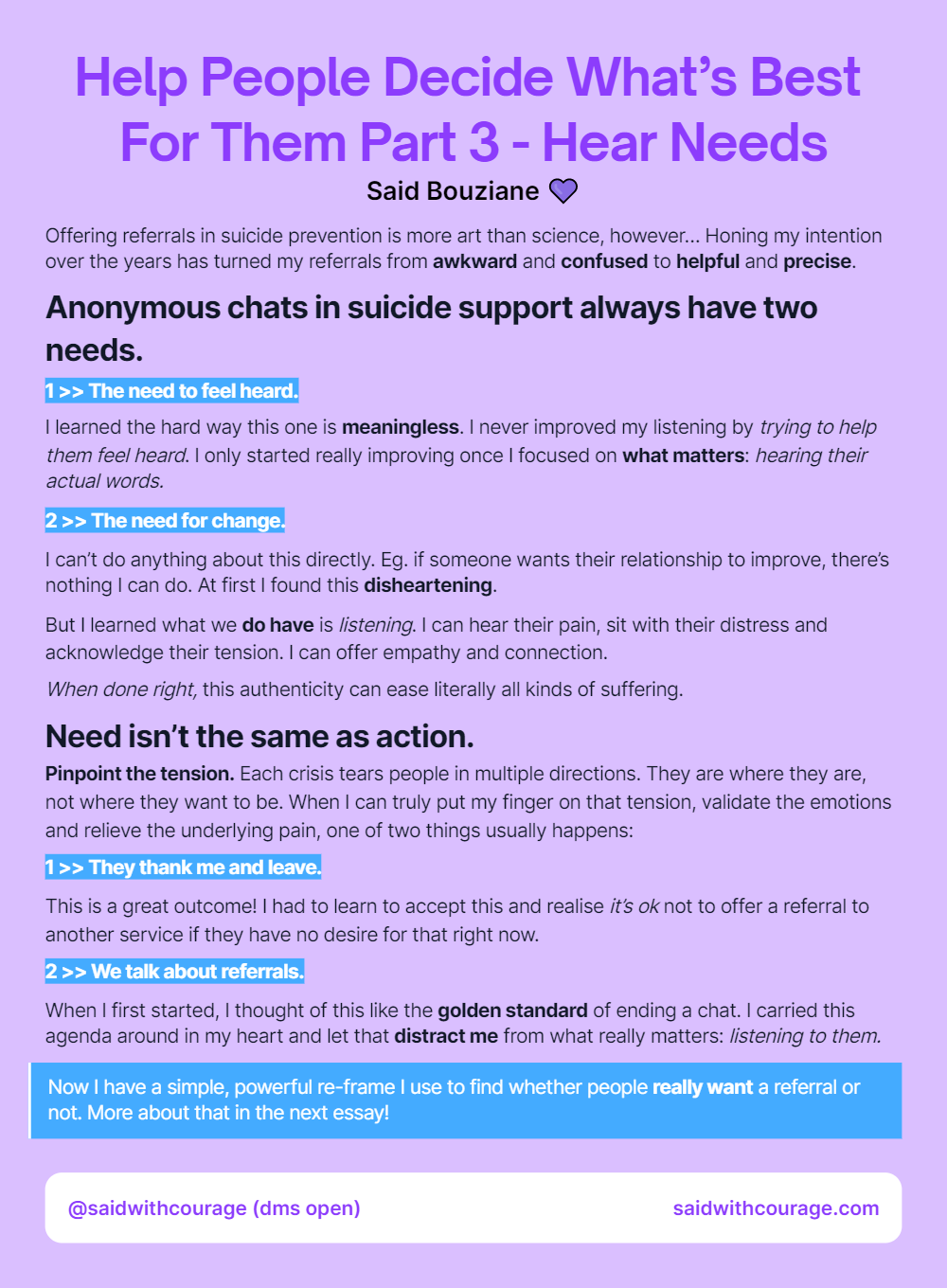Offering referrals in suicide prevention is more art than science, however… Honing my intention over the years has turned my referrals from awkward and confused to helpful and precise.
Anonymous chats in suicide support always have two needs.
1 >> The need to feel heard.
I learned the hard way this one is meaningless. I never improved my listening by trying to help them feel heard. I only started really improving once I focused on what matters: hearing their actual words.
2 >> The need for change.
I can’t do anything about this directly. Eg. if someone wants their relationship to improve, there’s nothing I can do. At first I found this disheartening.
But I learned what we do have is listening. I can hear their pain, sit with their distress and acknowledge their tension. I can offer empathy and connection.
When done right, this authenticity can ease literally all kinds of suffering.
Need isn’t the same as action.
Pinpoint the tension. Each crisis tears people in multiple directions. They are where they are, not where they want to be. When I can truly put my finger on that tension, validate the emotions and relieve the underlying pain, one of two things usually happens:
1 >> They thank me and leave.
This is a great outcome! I had to learn to accept this and realise it’s ok not to offer a referral to another service if they have no desire for that right now.
2 >> We talk about referrals.
When I first started, I thought of this like the golden standard of ending a chat. I carried this agenda around in my heart and let that distract me from what really matters: listening to them.
Now I have a simple, powerful re-frame I use to find whether people really want a referral or not. More about that in the next essay!

